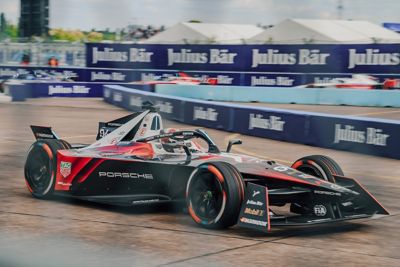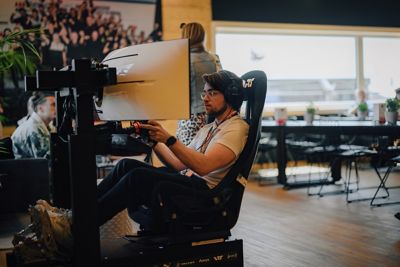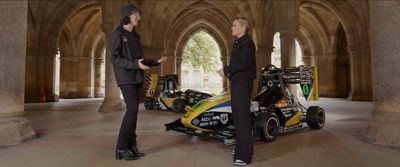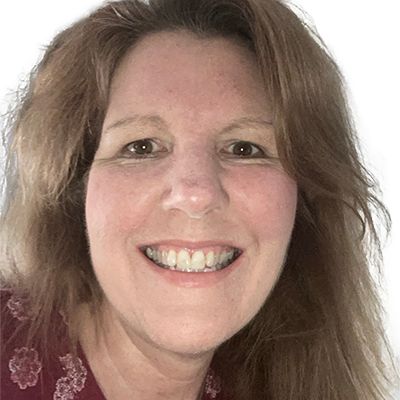-
United States -
United Kingdom -
India -
France -
Deutschland -
Italia -
日本 -
대한민국 -
中国 -
台灣
-
Ansys is committed to setting today's students up for success, by providing free simulation engineering software to students.
-
Ansys is committed to setting today's students up for success, by providing free simulation engineering software to students.
-
Ansys is committed to setting today's students up for success, by providing free simulation engineering software to students.
-
Contact Us -
Careers -
Students and Academic -
For United States and Canada
+1 844.462.6797

Discover how Porsche Motorsport and UGRacing use Ansys software to accelerate vehicle technology development.
In the world of clean-energy racing, the Porsche 99X Gen 3 racecar‘s performance is sending a powerful message. Topping out at over 200 mph (320 km/h), it can do zero to 60 in under 2.8 seconds, making the 99X Gen 3 one the fastest racing machines ever to hit the circuit at ABB FIA Formula E World Championship for electric cars.
During the final episode of Ansys’ online docuseries “Driven by Simulation,” you’ll see how simulation is a crucial part of electric powertrain optimization for TAG Heuer Porsche Formula E Team in ABB FIA Formula E racing. You’ll also see how Formula Student Team UGRacing, with a little help from Ansys, is creating educational opportunities that are directly shaping the automotive engineers, and solutions of tomorrow.

Pascal Wehrlein's Porsche 99X Electric Gen3 racing on the Berlin racetrack
Accelerating From Zero Toward Zero Carbon With Ansys
To date, Formula E is the only global all-electric racing series, characterized by some rather unique rules of engagement and insanely high levels of innovation. The single-seater race takes place in just one day, from free practice, to qualifying, to the actual event.
All cars participating in the series share the same Gen 3 chassis and battery. They also feature recyclable tires designed to last an entire race, regardless of the conditions, without a single pit stop for approximately 45 minutes. However, to make more efficient work out of available EV battery power often requires additional electric powertrain tuning.
In ABB FIA Formula E, in which wins are literally measured in milliseconds, every kilowatt hour of power leaving the battery is precious. At outputs of 300 kW (408 horsepower) in race mode, accounting for that power is critical, and energy management is an important strategy for Porsche Motorsport during a race that begins with electric powertrain optimization.
TAG Heuer Porsche Formula E Team relies on simulation to quickly analyze electric powertrain component performance and gain insights into the mechanisms that impact efficiency. To realize improvements in an extremely high-efficiency environment, for example, the team uses Ansys Maxwell low-frequency electromagnetic field simulation software and Ansys Twin Builder simulation software to detect and optimize the smallest of details in the powertrain.
Rather than beginning from zero, Porsche Motorsport engineers start from 90% efficiency to optimize the powertrain. During analysis, unplanned minor effects can surface that ultimately require attention. Sometimes a minor detail becomes a minor change that cannot be ignored. Detailed, simplified, analytical models coming out of simulation can be combined to address these changes and get the best results.

Team mechanics pushing the Porsche 99X Electric Gen3 into the garage at the Berlin E-Prix
Ansys, Porsche Motorsport, and the Next Chapter for EV Development
It takes some painstakingly measured efforts to develop, test, analyze, and then optimize powertrain performance to realize the incremental efficiency gains in kilowatt hours that can lead to victory. The big payoff for Porsche Motorsport in partnering with Ansys, however, isn’t just winning. It comes after all the simulation data from the entire season is closely shared, then integrated into various electric vehicle programs by engineers at Porsche Motorsport, which accelerates EV development across the automaker’s entire product portfolio.
“We race both on permanent racetracks, but we race in the cities, and we race on different continents and with different climates. And you have to adapt, and you have to adapt at every location because in the end we want to win and win as much as possible,” says Mengoni. “And if I now look at the road car, Porsche Taycan, for example, of course it's a Porsche. It's a sports car. I want performance for my Porsche, but I want also a certain driving range. And if we have knowledge gained from the racetrack on how to achieve those certain efficiencies, we can use that to develop a powertrain that achieves on the street.”

Guest enjoying the official team simulator in the Porsche Motorsport Lounge at the Berlin Formula E-Prix
On the Road to Something New With UGRacing
There are Formula E racing teams, and then there are Formula student racing teams. Members of the University of Glasgow’s UGRacing team are busy putting their own spin on an electrified single-seater ahead of a Formula Student race car competition. As beneficiaries of the Ansys Student Team Partnership, UGRacing receives all the free software, resources, and support they need to maintain a competitive edge during development.
"(Simulation) allows us to do iterative design,” says Jolie Bonner, team principal, UGRacing. “Ansys is used within an EV branch of our team. Obviously, as a first-year EV car, we have to make sure we’re doing things safely. We don’t have a huge background of knowledge going in. To be able to simulate things saves us some very potentially huge disasters.”
UGRacing competes within three classifications: a Concept class, a Formula Student class, and a Driverless class. All the work is completed over the course of their entire university studies. For the next several years, with the help of Ansys software, the team will be working on an autonomous race car in preparation for the 2026 season, where it hopes to finish in the top three.
“We start off with the perception systems, we look at sensors, and we try to gather information about the track,” says Joseph Ugrane, head software engineer, UGRacing. “Then we need to find a path and figure out how quickly we want to race. And all at the same time, we try to gather as much sensor data as possible to get a global estimate of what’s going on. We have a lot of different software teams, and we all contribute to this autonomous racing problem together.”
At the university level, there’s undoubtedly plenty of firsts. Every year, students are tasked to come up with an entirely new vehicle design before the competition. In the process, they gain valuable experience using an array of Ansys tools and solvers to conquer new challenges in thermal, fluid, and mechanical vehicle dynamics in a team setting.

Jolie Bonner, team principal, UGRacing (left) discusses simulation strategy with “Driven by Simulation” host Miss Emma Walsh.
“Being able to simulate things, when it comes to competition, we are informed about our car, we can justify our design choices without having to spend three times the amount of money that it took to build one car in order to be able to have physically tested everything. So it’s absolutely imperative to our design process.”
All students must work together as a team to flesh out budgets and determine schedules, as well as build, test, and iterate on their original vehicle designs. In addition to fresh ideas, it's just the type of hands-on experiences automotive manufacturers are looking for and a great way to kickstart a student’s engineering career post-graduation.
It’s a Wrap
It’s time to lower the checkered flag on “Driven by Simulation.” Episode 10 marks the end of our online docuseries dedicated to how simulation is transforming the way we move — on the street, off-road, or at the track. Thanks for joining us on this wild ride. If you haven’t already, make sure to catch the rest of the episodes featuring motorsport innovators Oracle Red Bull Racing, Ferrari, Honda Racing USA, and NASCAR.
“To be able to simulate things saves us some very potentially huge disasters.”
— Jolie Bonner, team principal, UGRacing
The Advantage Blog
The Ansys Advantage blog, featuring contributions from Ansys and other technology experts, keeps you updated on how Ansys simulation is powering innovation that drives human advancement.















